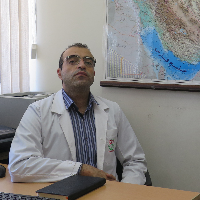Investigating the Relationship between Distribution of Plant Societies with Soil Physical and Chemical Properties in landforms of alluvial fans (A Case Study on Alluvial Fans in Southwest Miami)
Quantitative evaluation of the relationship between vegetation and environmental factors is an essential tool in the modern researches on vegetation ecology. The establishment of a plant community, changes in canopy cover percentage and plant density are influenced by soil, climatic, geomorphological and biological factors. Studying the above factors causes the distribution, density and variations of vegetation cover and habitat potential. Much of Iran has the arid, semi-arid or extremely arid climate. In most of these areas, vegetation is little and establishment of vegetation in these areas are associated with numerous restrictions. In addition, the distribution and density of vegetation on the land surface was not accidental, but rather the presence of different plant species in one habitat due to environmental factors (climate, soil, topography, etc.), ecological needs of each plant and tolerance range of each species. Relative to the environmental factors important in each habitat. In fact, by studying environmental characteristics using different statistical methods, the causes of plant community distribution are identified, the most important environmental factors affecting community distribution and the habitat's ability to adapt to other communities. Classification techniques are one of the multivariate statistical methods used in ecological knowledge in the last three decades. Ordering reveals the hidden in the collected data and also reduces the volume. Methodology Study area The area under study has been located in the northeast of Semnan province, north of Shahroud city. The study area includes three alluvial fans including Saran, Moghatelan and Hot-Sokhteh.
Impact alluvial fans are always one of the most prominent geomorphologic landforms with new, old, and even fossilized surfaces. Separation of old and new alluvial fans can be done based on indicators such as weathering, morphology, surface of alluvial fans, drainage patterns, color tone in satellite images. Vegetation sampling Field operations were carried out in early June 2019 with the aim of familiarizing with the area, collecting and identifying plants. In fact, at each site (P1 to P6) 1 transect of 200 m and along each transect 8 plots of 8 * 8 m were deployed on Interfluves, Swales, channels, Bar on toe and apex of all three alluvial fans. Therefore, 43 vegetation sampling plots were laid. Then, within each plot, plants were identified and list of plant species, percentage and canopy density of each species were recorded in the plot. Soil sampling In order to investigate physical and chemical characteristics of soil and their effects on the density and type of vegetation on alluvial fans; 48 soil samples from soil depths of 0-20 cm were collected from different landforms of old and young surfaces of alluvial fans, including bars, swales, channels, and interfluves. Also the amount of PH, EC, phosphorus (P), absorbable potassium (K) and sodium (Na), calcium carbonate (CaCO3), Saturation percentage (Sp), water retention capacity in the soil (WHC), soil texture, and total organic carbon (OCT) were measured. Vegetation analysis In this study, based on 13 physical and chemical properties of 44 quadrates, cluster analysis was performed and vegetation classification was performed by using PAST software. Classification of environmental factors and vegetation Multivariate analysis of principal components (PCA) was performed using by PAST software. Principal components analysis was performed on 13 environmental factors including soil texture (sand, silt and clay content), acidity (pH), electrical conductivity (EC), organic matter content, saturation moisture content, soil water retention capacity in the soil, calcium carbonate, phosphorus, Potassium, sodium and percent of gravel or pebbles were determined.
Plant species of study area Overall, 32 families, 44 genuses, and 46 species were identified by field works in study area. classification of Area vegetation Using cluster analysis with Wards method and Euclidean distance index in PAST software showed that 44 plots in the study area belonged to 4 plant communities. Results of Principal Component Analysis (PCA) In order to determine the most important factors affecting the distribution of plant species, Principal Component Analysis (PCA) was performed on the data. Principal component analysis on 13 variables (soil properties) in 44 habitat (landforms) showed that the first, second, third, fourth and fifth axes were 47.66, 38.91, 7.72, 2.33 and 1.4 percentage of variance justifies the vegetation changes.
In the vegetation data analysis of the study area, using cluster analysis, four ecological groups of vegetation were separated which each ecological group represents a unique homogeneous unit of vegetation. Therefore, identification of plant groups and their location is very important in describing the variability of environmental conditions and can be an appropriate model in fitness management. Most of the active and inactive parts of the alluvial fan are located and in the parts where the amount of fine sediment is higher. In fact, soil saturation moisture and soil water retention capacity are the most important environmental limiting factors affecting plant residues in arid and semiarid regions. In the Miami due to chattels grazing, tractor movement to change land use and heavy machinery due to the presence of several factories in the study area, as well as unnecessary harvesting of medicinal and medicinal plants, in some parts of alluvial fans, especially alluvial fans of soil texture. It is being degraded and these are a serious threat to valuable and rare plant species in the region. Keywords: Cluster analysis, Environmental factors, Ordination, Alluvial fan, Landform, Miami.
- حق عضویت دریافتی صرف حمایت از نشریات عضو و نگهداری، تکمیل و توسعه مگیران میشود.
- پرداخت حق اشتراک و دانلود مقالات اجازه بازنشر آن در سایر رسانههای چاپی و دیجیتال را به کاربر نمیدهد.



